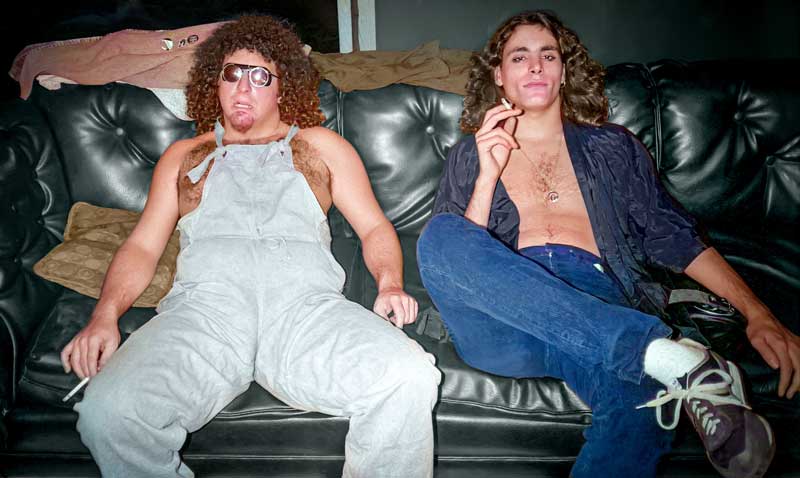
Connecting with Frank Zappa:
The weird thing was that this wasn’t the first time Vai tried to connect with Zappa. Their story was a little windier than that. Steve was around 16 years old when one of his buddies showed him a Rolodex he had stolen from a New York recording studio. Steve could not believe it when he saw his idol Frank Zappa’s number right there in black and white. So he called Mr. Zappa, but his wife Gail answered. She was patient in listening to Steve profess his love for Frank’s music, and Gail mentioned to him that “Frank is on tour but you can call back in 6 months”. And teenage Vai did just that, every six months he would call the Zappa’s home. (Sometimes, Gail Zappa would answer, but Frank was never available.)
Finally, in Steve’s first year at Berklee when he made his annual call, Zappa actually happened to be around, picked up the phone and was in a talkative mood. Steve had read that Frank was looking for some Edgard Varese scores, and Steve, wanting to impress Zappa, suggested he could xerox them from the Boston Library and send them to Frank. Feeling the timing was right, Steve suggested he could also send his transcribed version of Zappa’s “Black Page” and the Morning Thunder demo tape. Frank said, “Sure.”
Vai thought maybe that was all of the interaction he was going to have with Frank. But Zappa was thoroughly impressed with Steve’s transcription as well as his playing. So Frank suggested that Vai record himself playing “Black Page” both at regular tempo and as fast as he possibly could. Steve did so and sent Zappa the recording. It was so good, that he wanted Steve to try out for his band, but once he found out how old Vai was, Zappa felt 18 was just too young for everything recording and touring would demand. But Zappa did hire Vai to transcribe his music at $10 a page.
Up until this time, Steve had never seen his name in print. (Pre-internet, this was a much bigger deal to up-and-coming musicians.) Then someone sent him a copy of November 1979’s Musicians’ Industry Magazine where Frank talked up how good Steve was and, amongst other comments, Zappa said, “I think he’s going to turn into something.”
Such mind-blowing compliments drove Vai to drift away from school. It’s rumored that Vai was blowing off most of his classes to do his transcriptions for Frank. Vai had to make a decision; he couldn’t do both. But since the green musician felt there was much more to learn from Frank than school, Vai quit Berklee in December 1979, just a little over a year after starting there. (He would later receive an honorary degree from Berklee.)
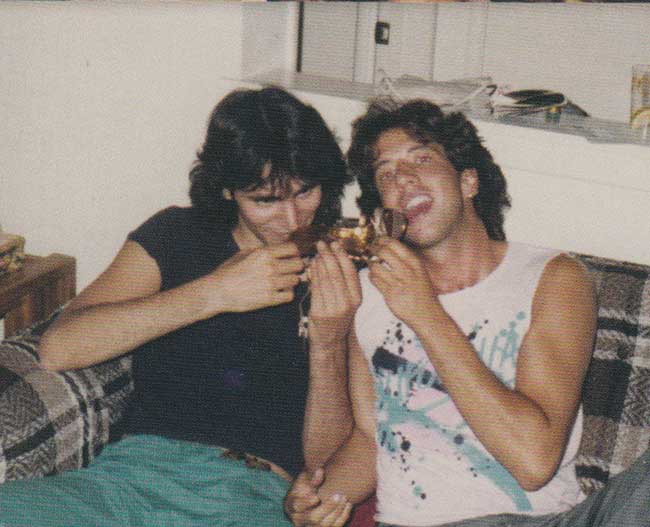
Moving to California:
His move to California on June 7th, 1980, along with Berklee friend Marty Schwartz was fulfilling three dreams. To be closer to and work for Frank, to live out his childhood dream of being in a traveling rock band like The Partridge Family’s Danny Bonaduce, and to find his stuffed monkey that his mom said went to California. (She had really thrown away toddler Vai’s favorite stuffed animal due to it falling apart, but she told her son that his monkey had taken the train to California.)
Upon arriving on the west coast, Steve continued to work tirelessly on transcribing Frank’s music. (This work would later be published in The Frank Zappa Guitar Book.)
One day Zappa asked Vai to transcribe and learn a guitar solo called “Persona Non-Grata.” This name was later changed to “The Theme to the 3rd Movement of Sinister Footwear.” Steve doubled Frank’s solo, which led Frank to have Steve record perhaps 80% of the guitars on the You Are What You Is album.
Zappa was so impressed with his growth in the last two years that he asked Vai to try out for the touring band. (Against Frank’s manager’s wishes due to the expense of adding another member.) Frank was tough on young Vai during the tryout, even commenting, “I hear Linda Rondstant is looking for a guitarist.”At the end of the audition, Steve, feeling crushed, apologized to Frank for letting him down. Frank happily retorted, “You’re in the band.” In seven short years, Steve had gone from playing guitar in his bedroom to playing for one of the most renowned musicians ever. The Little Italian Virtuoso was born.
Zappa would later say about Vai:
“I feel comfortable playing with Steve Vai; I mean, I like the way he plays. I think he’s really a great guitar player. He does everything on the guitar that I don’t do. He does all of the stock Stratocaster noises, and he makes everything that Van Halen ever dreamed of and then some. He reads music. He plays sixteenth notes which I don’t play. And he does all of this stuff that I don’t do; and I think that our styles are kind of complementary. He’s a good musician, and I enjoy playing with him because he’s not just a Mongolian string-bender. And he’s a thoroughly trained musical person. And I like working with him.”
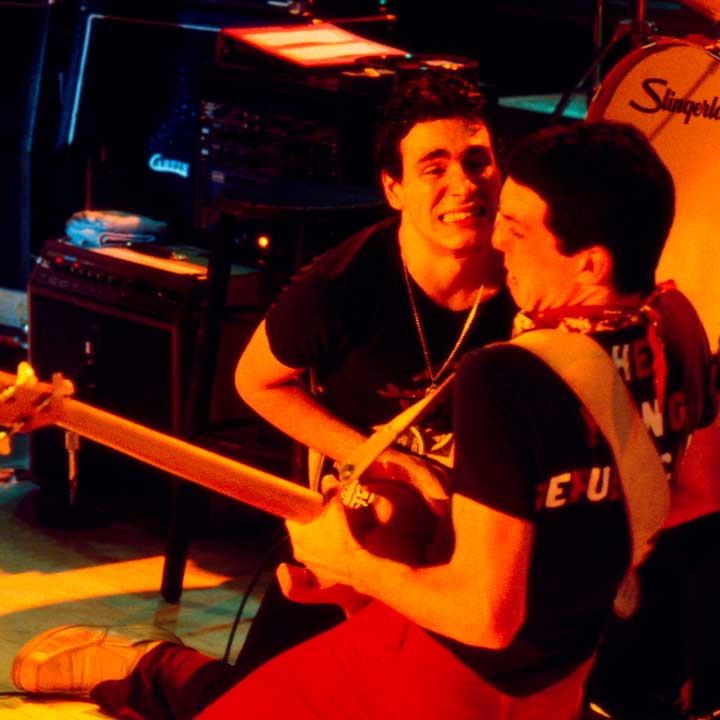
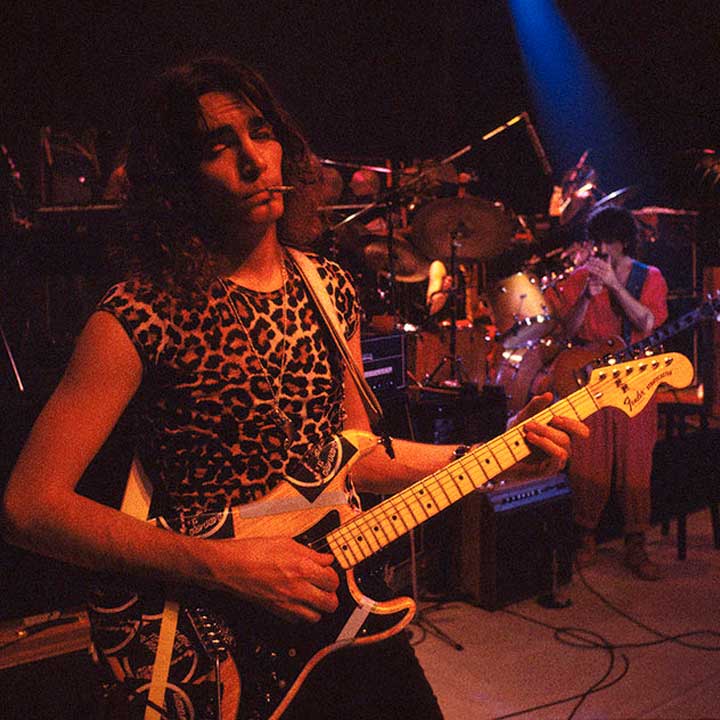
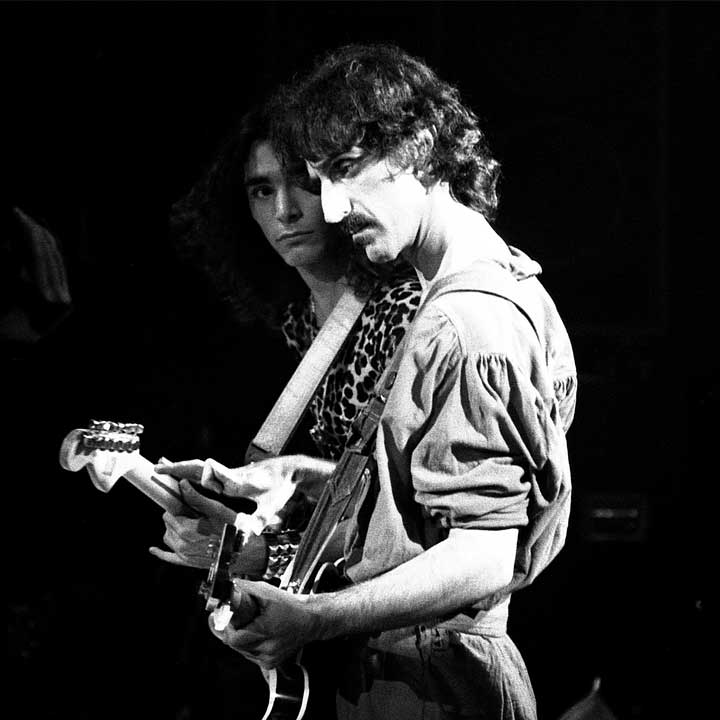
Touring with Frank Zappa:
Vai’s first tour with Zappa was in the fall of 1980, 35 dates in the U.S. with a couple of performances in Canada. Steve asked Frank for an honest appraisal of his first night with the group. “He said, ‘Your playing is great, but your tone sounds like an electric ham sandwich.'”
Steve responded, “But I have all the right gear. I got the Strat, the Marshall, etc.,” to which Frank replied, “Your tone is in your head.”
This one statement not only helped the guitarist redefine his tone, but it kicked off a lifelong inner journey of self-discovery. Vai thought, “If the tone of my guitar is produced in my head based on how I’m hearing it, what else is in there that I believe?”
Dark Period of Life:
Things seem to be going pretty well for the Carle Place native. But, inexplicably, after the November 6th, 1980 Zappa Montreal concert, Vai had a terrible anxiety attack which led to prolonged manic depression and constant anxiety. At one point, it got so bad he was on the verge of suicide. None of it made sense to Steve. He had great friends and a decent-paying job he loved. He thought maybe what his aunt had told him when he was a very young boy was true: “If you become famous, you would become insane.”
“I was… totally unbalanced. There was like a short-circuit going on in my soul,” he said in an interview. Not knowing what to do, Vai started to turn in many directions looking for answers. He even had himself audited via an e-meter with the Scientology cult.
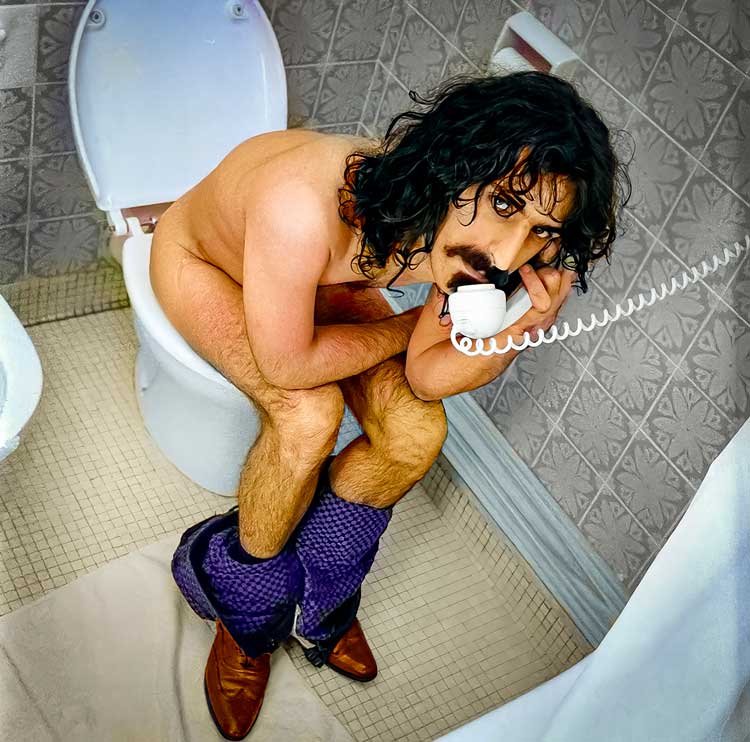
This dark period lasted over a year and a half. Then he came to the point where he acknowledged the fact that he didn’t really know anything about life, but he knew he wanted the truth. Mysteriously, the book The Magic in Your Mind by U.S. Anderson showed up in his mailbox shortly after his surrender. The book professed that a man changes the state of his outer world by first changing the state of his inner world. Everything that comes to him from outside is the result of his own consciousness. By understanding the process and effect of mental imagery, he goes directly along the correct path to his goal. This 250-page book turned on Vai’s inner light that would guide him not only out of this dark period but would also cement the foundation he would build on for the rest of his life.
He branched out and consumed other similar books that he would find in the used section from his frequent visits to the Bodhi Tree Bookstore, a metaphysical book store in West Hollywood. He became a vegetarian, stopped smoking cigarettes, and even though he had never been a big drinker before, he quit drinking alcohol. Slowly all these positive steps were taking their wanted effect. Around the time the Zappa tour got to Europe in mid-1982, almost two years after it had started, Steve started to shake off his feelings of dread for good. This would set up a turning point for him because the Zappa touring train was about to come to an end. Vai would need to find another gig.
The Zappa Riot:
The Zappa tour was on its last date on July 14th, 1982 in Palermo, Italy. A clash erupted between over-eager police wanting to bash heads and fans that just
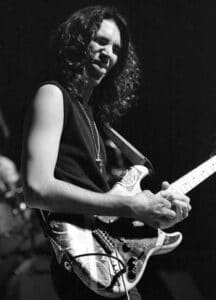
wanted to be closer to the stage. During the song “Cocaine Decisions,” the police started to shoot tear gas into the crowd and a full-blown riot broke out. They ended the gig after only 59 minutes, and for the time being, Frank decided he was done with touring. The entire band had to escape the area wearing bullet proof vests and ducking in between cars to get to an escape van. The next day Steve flew directly to New York to visit his parents, and upon waking in the morning, he read in a newspaper that 3 people were shot at a riot during a Frank Zappa show in Palermo Sicily the night before. Zappa stated a month later, “We were playing a soccer stadium when, for some unknown reason, the cops started firing tear gas into the crowd. From what I could see from the stage, some of the kids in the audience started shooting back at the cops. That was our last European tour. It’s too expensive to play, too expensive to travel around, and with the anti-American sentiment around, it is hard to go onstage and do what you do with the emotional freight that is attendant to European attitudes toward American foreign policy.”
Many years later, Vai would reflect on his time with Zappa and what he learned from Frank as a person. “Musically I knew everything he was doing on a musical theory level, there wasn’t anything that he did that baffled me with the exception of how inspired it was. The academics of his musicality were advanced for sure, but his imagination was unconditioned.”
Zappa Ethics:
The most important ethic he took away from his time with Zappa was honesty. Vai has told the story of when he was transcribing for Frank and he would create lead sheets. A lead sheet is a simplified version of a musical score, providing just the melody, lyrics, and chord names. The lead sheet would be created to determine how ASCAP would compensate you for your song. ASCAP or American Society of Composers, Authors and Publishers is an organization that would collect royalties on behalf of musicians and then in turn pay the artist. The amount of bars in a song would determine how much the artist would be paid. Steve was working on a song where he could have added more bars to the same song without really changing the song hence Zappa would be paid more. When Vai brought this up to Zappa, Frank retorted “Just do the song the way it’s supposed to be done, I don’t need to make my money that way.”
This one statement from Frank had a colossal impact on the rest of Steve’s life. He realized that there is no need to cheat anyone for anything. Once he was back in his West Hollywood apartment, Vai continued to transcribe and overdub for Zappa, but for the most part, his time playing with Frank was over. The “stunt” guitarist was leaving the building to focus on his own music.